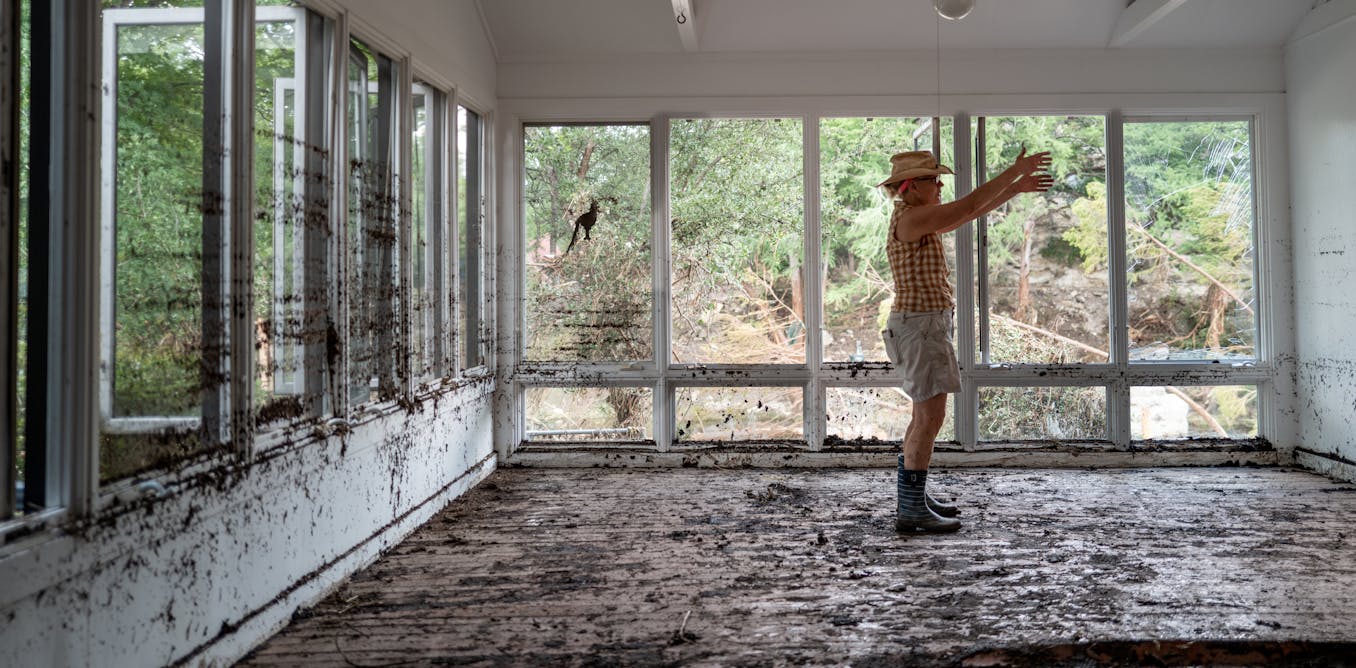Toward the beginning of Jean-Luc Godard’s 1963 film Contempt, there’s a long take in which the camera roves around Brigitte Bardot’s nude body. We listen as her character takes stock of her shoulders, her mouth, her eyes, her nose, her ears, as she asks her lover if he admires them all. “Yes,” he responds. “I love you totally, tenderly, tragically.”
The German artist Astrid Klein also appears to love Bardot totally, tenderly, tragically. In her piece Untitled (je ne parle pas…), Klein offers two-rephotographed images of a vampy Bardot strutting her stuff. Blown up to a scale that recalls advertisements plastered across city streets, these perfect pictures start to come apart, their Ben-Day dots made visible.
In disturbing the veneer of these glamor shots, Klein suggests that it’s impossible, actually, to adore every part of Bardot. All we know of the actress are representations, not the real thing. Klein is exposing the limits of the former, making these images of her oblique and mysterious.
Untitled (je ne parle pas…) is one of a handful of “photoworks” from 1979 by Klein that are currently on view at Sprüth Magers in New York. The show marks the German feminist icon’s debut in the city—which is shocking, given that the photoworks dovetail so neatly with contemporaneous photography by Cindy Sherman. Klein, like Sherman, evokes images of women in films and advertisements, only to lend these images an opacity that denies easy readings.
European arthouse cinema of the postwar era, with its impenetrable women and ambiguous plots, is a touchstone for Klein. Monica Vitti, Michelangelo Antonioni’s frequent leading lady, has recurred throughout Klein’s work. Vitti appears at Sprüth Magers in a still Klein re-photographed for her 1979 work Untitled (powerless…). In it, Vitti appears beneath a translucent sheet of archival paper that partially shields her from leering eyes while emphasizing what film theorist Laura Mulvey would call her “to-be-looked-at-ness.”
But is Vitti truly powerless, as the photowork’s title implies, or does she, in her apparent passivity, possess a different form of control? Klein seems to be asking that question, placing two seemingly opposed adjectives onto the archival paper she has photographed: POWERLESS and REBELLIOUS. Typewritten in Courier font, these words repeat amid strings of x’s, as if context has been redacted, suggesting they may have belonged to a fuller sentence whose meaning remains unknowable.
Klein continued to enlist cryptic text in her paintings from the late ’80s and early ’90s, a few of which are in the backroom of Sprüth Magers. The paintings have a nice sheen to them, thanks to the quartz, alabaster, and zinc enlisted in their making. The text is painted onto these abstractions—in one, the phrase “tragicmagic” is repeated over patterning recalling a bunched curtain—but, with little to grab onto, the words prove overly elusive. The inscrutability of the textual fragments in the photoworks, on the other hand, lends them a certain tension the paintings lack—tension arising between the words and the pictures, which form an unstable relationship.

Take Untitled (paint my life…), which features a woman whose mouth hangs open as she stares outward amid the titular typewritten words, PAINT MY LIFE. Her made-up face invites more looking, but this is simply not possible: a white veil-like blur covers most of her face, obscuring one eye. In much the same way that Klein asks you to fill in the gaps between words and texts, this veiled woman gives you little information, then asks you to fill in—or paint in—the rest. Here is another reminder that, too often, we think we know people in pictures, and just as often, we are simply projecting.

The post “German Feminist Icon Astrid Klein Gets Her New York Debut” by Alex Greenberger was published on 02/09/2024 by www.artnews.com



















![MONTAGE SWIMWEAR: 12 Designers, 1 Show, 1 Big Reveal | Miami Swim Week 2025 [4K] – PART 1 MONTAGE SWIMWEAR: 12 Designers, 1 Show, 1 Big Reveal | Miami Swim Week 2025 [4K] – PART 1](https://i.ytimg.com/vi/MKDhVDFwOes/maxresdefault.jpg)
















